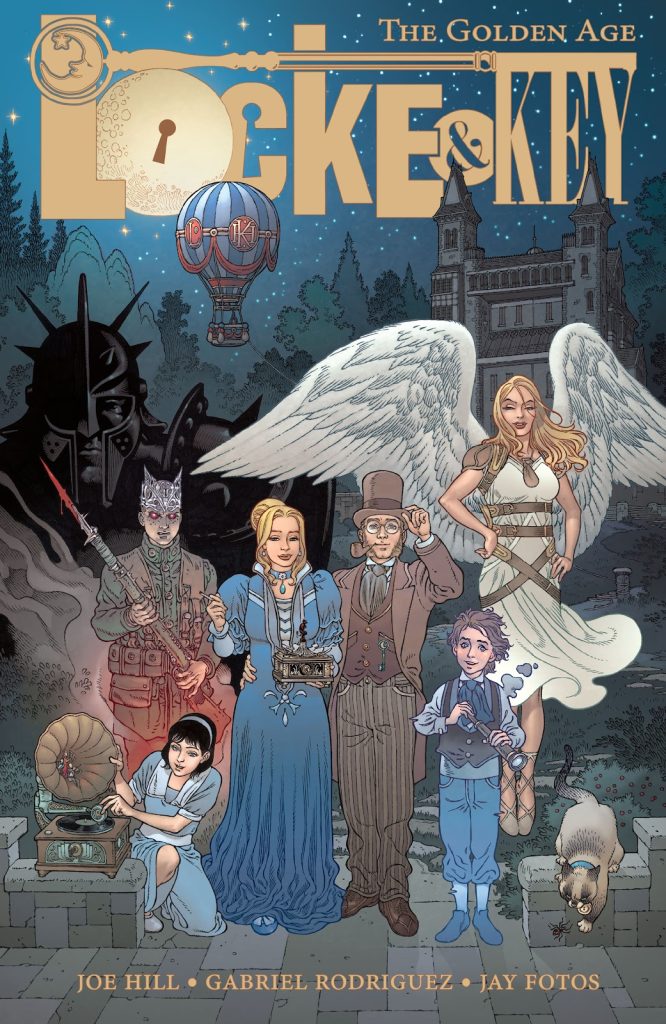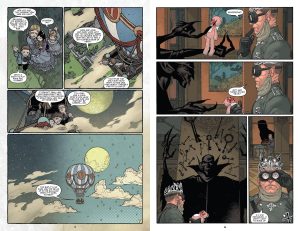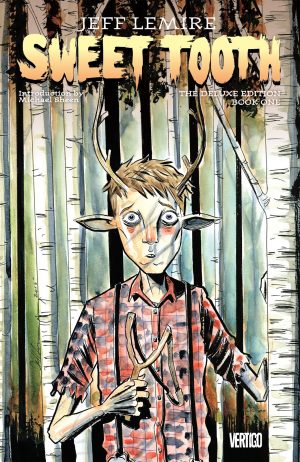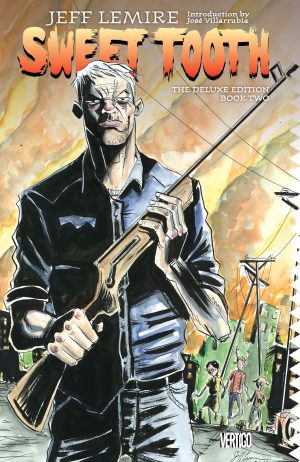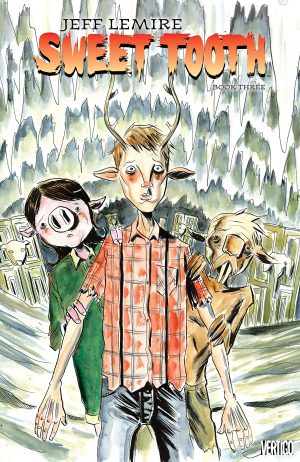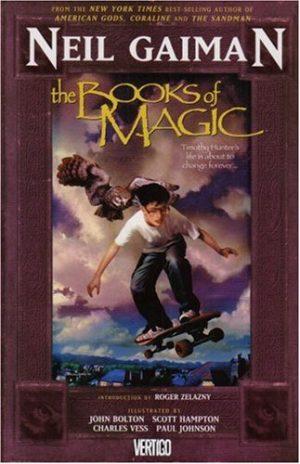Review by Ian Keogh
As Joe Hill states in his introduction, you don’t have to have read any earlier Locke & Key nor watched the TV show to enjoy The Golden Age, although it probably helps if you know who Sandman and his early supporting cast are. Locke & Key set in the present is hugely enjoyable, but stands by itself, while this takes the same basics and looks back at an earlier Locke family when assorted keys with magical properties resided in the Keyhouse and opened different doors. In practice it’s a collection of five separate stories, thankfully all by Hill and Gabriel Rodriguez.
The first three are all short, and the opener in particular seems very slight in setting up a homage to a sequence from The Incredible Shrinking Man, while the second is better, but the strength is pathos, not horror. It’s another homage, this time to Winsor McCay, which considering the world of dreams is later explored seems appropriate. The branch of the Locke family introduced in 1912 feature throughout as the material spans a fifteen year period.
If the feeling is that the opening three stories are clever and exquisitely drawn, but lacking depth, ‘…In Pale Batallions Go…’ has far greater substance. The horror is supplied by World War I, with the initial theme being whether or not there’s a moral obligation to use the keys in the Keyhouse to intervene. That intervention occurs, and the consequences are disastrous in what’s the first story here to match the twists and emotional pull of the original series.
For many readers the collection’s allure will be what was promoted as the teaming of the cast with DC’s Sandman, but although he appears, his supporting cast are more prominent. It takes place in 1927, a time when an occultist named Roderick Burgess has Morpheus imprisoned. Hill and Rodriguez remain true to that, so Morpheus only has a small role, yet Neil Gaiman’s supporting cast are many, and while visiting DC’s playground Hill also makes use of another occult character.
Hill cleverly sets up a couple of maguffins in the earlier stories, but creates interesting new problems with the prompt being Mary Locke’s determination to restore someone to life. Letting Rodriguez loose on the Sandman cast is a definite plus, and his version of one of them is far more threatening and visceral than their original appearance. His thoughtful layouts and attention to detail serve both casts well, and when the story hits Hell, he’s a full service provider.
Fans of Sandman can be very protective, and it’s been a rare creator using the cast who’s matched Gaiman’s imagination, but Hill is a writer with creative pedigree, and it’s going to be an incredibly picky Sandman fan who won’t enjoy his interpretations. In a couple of cases he even sets people up for the roles they’ll play in the 1990s Sandman stories. The first half is primarily homage, although includes a sparkling couple of scenes with the sleazy Burgess, but the second is a very dangerous game well played through. The only caveat is that for the story to work readers have to know some Sandman characters and what they are. Otherwise, a tour de force.
